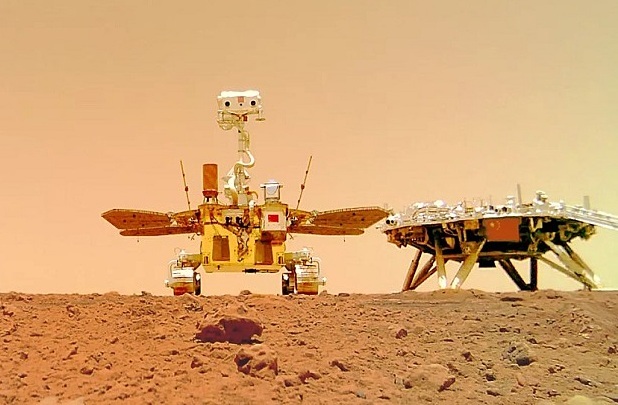Mars robot Zhu Rong cannot wake up from hibernation because its solar panels are covered with a thick layer of dust.

The Zhu Rong robot has been operating for 358 days on Mars. Photo: CNSA
After months of silence, Chinese government officials have revealed the fate of a Mars rover that stopped moving nearly a year ago, Live Science reported on April 27. Zhu Rong, China's first Mars rover, is unlikely to be able to generate enough electricity to wake up as planned after hibernation because of dust and sand blocking its solar panels, Zhang Rongqiao, chief designer of the Mars exploration program, told CCTV.
This situation has long been considered the most likely reason why Zhurong has not been able to return to life since hibernation in May 2022. The rover was scheduled to wake up in December 2022, when the northern Martian winter ends and sunlight becomes more abundant, but the rover has remained silent. In March 2023, NASA photos showed Zhurong in the same spot where it hibernated nearly a year earlier. Researchers had hoped that the unusually cold winter was the cause and that the rover might wake up when temperatures rose. But Zhang’s April 25 post pointed to Martian dust as the culprit.
The Zhu Rong rover lasted three months longer than its original mission, exploring the vast plain known as Utopia Planitia on the red planet for 358 days before going dormant. During that time, the rover traveled 1,921 meters. Zhu Rong will land on Mars in 2021 with the goal of studying the planet's rocks, magnetic field, and weather.
As described in 2021 in the journal Innovation, the robot carries six instruments including a ground-proximity radar, a ground-composition detector, a surface magnetic field detector, a multispectral camera, a meteorological station, and a Mars terrain orientation camera. During its operation, Zhu Rong took a selfie and many surface images. It also recorded wind noise and conducted experiments to transmit information between the European Space Agency (ESA) and the China National Space Administration (CNSA).
An Khang (According to Live Science )
Source link







![[Photo] Top players gather at the 2025 Nhan Dan Newspaper National Table Tennis Championship](https://vphoto.vietnam.vn/thumb/1200x675/vietnam/resource/IMAGE/2025/5/23/9ad5f6f4faf146b08335e5c446edb107)























































































Comment (0)